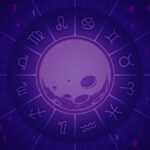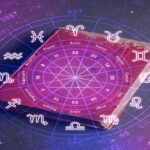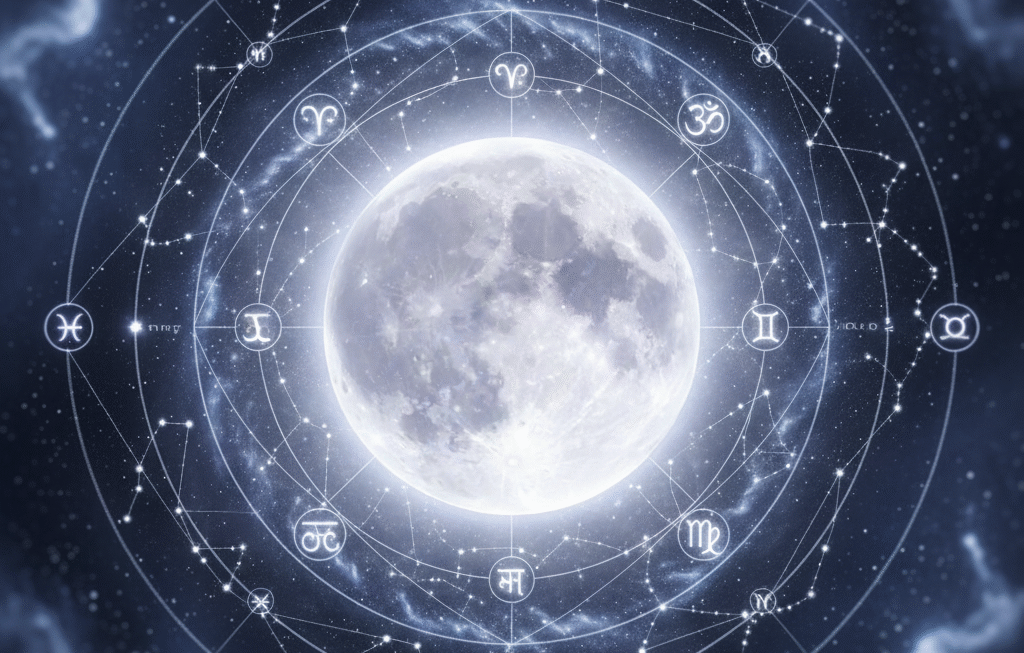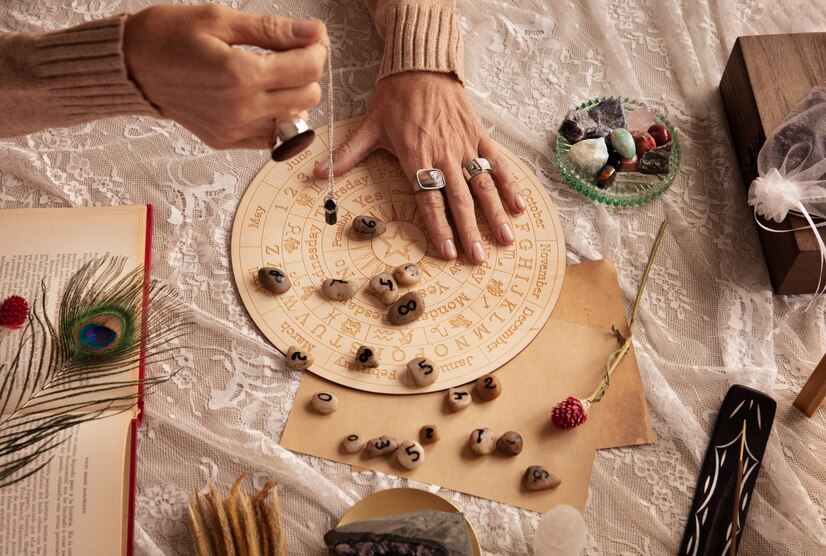Embark on a practical and empowering journey into Muhurta, the fascinating branch of Jyotish (Vedic Astrology) dedicated to Choosing an Auspicious Time to begin important activities. Unlike natal astrology which reads the karma at birth, Muhurta helps select a favorable cosmic window to initiate actions, thereby enhancing the chances of success and minimizing obstacles. This guide explores Muhurta Explained, delving into the key elements of the Vedic Almanac (Panchanga) like Tithi Nakshatra Timing and the principles of Electional Astrology India.
First Stop: Ancient Wisdom – Aligning with Cosmic Rhythms
(The Traditional Jyotishi’s View)
Our journey begins with the ancient Vedic understanding that time itself possesses varying qualities. Initiating an action during a time when celestial energies are supportive greatly enhances its potential for positive results.
- Historical Context: Muhurta is deeply ingrained in Vedic tradition, used for millennia to select timings for major life events like marriage (Vivaha Muhurta), starting education (Vidya Arambha), building a house (Griha Arambha/Pravesha), starting a journey (Yatra), or initiating important ceremonies. Classical Jyotish texts dedicate significant portions to Muhurta rules.
- Classical Techniques: The core of Muhurta lies in analyzing the Panchanga (literally ‘five limbs’) – the five key elements of the Vedic almanac for a specific day and time:
- Vara (Weekday): Each day is ruled by a planet (Sun-Sunday to Saturn-Saturday), favoring activities related to that planet.
- Tithi (Lunar Day): The elongation of the Moon from the Sun (30 Tithis in a lunar month). Some Tithis are auspicious (e.g., 2, 3, 5, 7, 10, 11, 13), others inauspicious (e.g., 4, 8, 9, 14, New/Full Moon days for certain actions).
- Nakshatra (Lunar Mansion): The Moon’s transit through one of the 27 Nakshatras is critical. Each Nakshatra is suitable for specific types of activities (e.g., fixed Nakshatras for building, movable Nakshatras for travel).
- Yoga (Lunisolar Angle): Another measure of the Sun-Moon angle (27 Yogas). Most are auspicious, but some (like Vyatipata, Vaidhriti) are highly unfavorable.
- Karana (Half Tithi): Further division of the Tithi (11 Karanas). Some are fixed and inauspicious (like Vishti/Bhadra).
- Traditional Interpretations: Beyond the Panchanga, a strong and well-placed Lagna (Ascendant) must be chosen for the moment of initiation, ensuring the ‘birth chart’ of the event itself is auspicious. Placement of Chandra (Moon) is vital (should be strong and well-placed). Malefics should ideally be weak or well-placed (e.g., in Upachaya houses 3, 6, 11). Specific planetary placements are required or avoided depending on the nature of the activity.
- Expert Insight (Traditional Source): “As a skilled farmer sows seeds at the right time for a good harvest, so should important actions be initiated at an auspicious Muhurta, aligning human effort with favorable cosmic support.” – Principle reflecting classical Muhurta philosophy.
- Hidden Wisdom: Tara Bala & Chandra Bala: Assessing the strength of the transiting Moon based on its Nakshatra distance from the natal Moon (Tara Bala) and its sign placement from the natal Moon sign (Chandra Bala) for the person initiating the action is a crucial personalized check.
Crossing the Bridge: From Ritual Timing to Life Planning
As we journey forward, the application of Muhurta principles extends beyond purely religious or traditional ceremonies into the realm of modern life planning. While the core techniques remain, the focus broadens to include timing for business launches, signing contracts, medical treatments, and other contemporary significant beginnings, applying ancient wisdom to maximize success potential in today’s world.
Second Stop: Contemporary Application Landscape
(The Modern Jyotishi’s Approach)
Here, Muhurta is utilized as a strategic tool for aligning actions with supportive cosmic energies, enhancing personal and professional endeavors.
- Contemporary Methods: Modern Jyotishis use specialized software to quickly calculate Panchanga details and favorable Lagnas for specific dates and times. They synthesize these factors based on the specific activity being planned (e.g., requirements for a marriage Muhurta differ greatly from starting a legal case). The client’s natal chart is often considered to ensure the Muhurta aligns well with their individual predispositions (e.g., avoiding choosing a Muhurta Lagna lord that is severely afflicted natally).
- Psychological Insights (Vedic Lens): Choosing a Muhurta can have a positive psychological effect, increasing confidence and reducing anxiety by providing a sense of alignment and right timing. It encourages conscious planning and intention-setting for important beginnings.
- Evolving Interpretations: Applying Muhurta principles to modern contexts requires interpretation. For example, choosing a time for launching a website might favor Nakshatras related to communication (e.g., Ardra, Swati) and a strong Budha (Mercury) in the Muhurta chart. Timing for surgery requires considering Mangal (Mars), the 6th/8th houses, and healing Nakshatras.
- Technique Deep Dive: Avoiding Malefic Yogas: Checking the Muhurta time for specific negative planetary combinations (e.g., unfavorable positions of the Moon, Mars-Saturn conjunctions in sensitive houses, presence of Vishti Karana) is crucial to avoid built-in obstacles.
- Expert Insight (Modern Jyotishi): “Muhurta is about starting on the right foot, cosmically speaking. By choosing a time when the energies support your intention, you harness a favorable celestial tailwind for your venture, increasing its potential for a smooth journey and successful outcome.” – Contemporary Jyotish Practitioner.
- Alternative Approaches: Some practitioners might give more weight to certain factors (e.g., Nakshatra vs. Tithi) based on their school of thought or the specific activity. The complexity can range from simple Panchanga checks to highly detailed chart analysis for the moment.
Third Stop: The Student’s Learning Curve
(The Student’s Journey)
Learning Muhurta requires understanding the five elements of the Panchanga, the significations of Nakshatras for various activities, basic rules for strengthening the Muhurta Lagna, and avoiding major afflictions. It’s a practical branch demanding attention to detail.
- Learning Process: Students first memorize the Panchanga elements (Vara, Tithi, Nakshatra, Yoga, Karana) and their general auspicious/inauspicious natures. Learning which Nakshatras are suitable for which activities is key (Tithi Nakshatra Timing). Understanding how to choose a strong Lagna and place benefic/malefic planets favorably in the Muhurta chart follows. Recognizing major negative combinations to avoid is essential.
- Common Questions: “Is there always a ‘perfect’ Muhurta?” Answer: Rarely. Muhurta is often about finding the best available time, balancing various favorable factors while minimizing unavoidable negatives. Perfection is elusive; optimization is the goal. “How important is Muhurta compared to my natal chart’s promise?” Answer: The natal chart shows the overall potential (Prarabdha Karma). Muhurta influences the initiation and smooth progress of a specific action within that potential. A good Muhurta cannot override severe natal afflictions, but it can significantly help maximize potential and ease the process.
- Breakthrough Moments: Successfully selecting a simple Muhurta for a minor activity (like planting something) and observing a positive outcome. Understanding how different Panchanga elements combine to create the quality of a specific day. Recognizing why certain days ‘feel’ better or worse for certain tasks based on the prevailing Nakshatra or Tithi.
- Expert Insight (Jyotish Student): “Learning Muhurta felt like learning cosmic gardening! Understanding when to ‘plant’ activities based on the Tithis and Nakshatras made so much sense. It shifted my approach from just doing things randomly to planning with intention.”
- Misconceptions vs. Reality: Misconception: Muhurta guarantees success regardless of effort or circumstances. Reality: Muhurta provides favorable cosmic support for the initiation. Success still requires appropriate action, skill, and depends on the natal chart’s overall promise. Misconception: Muhurta is just superstition. Reality: It’s a complex system based on millennia of observing correlations between celestial patterns and terrestrial events, aiming to harmonize human actions with natural rhythms. Muhurta Explained reveals a deep logic.
Fourth Stop: The Realm of Practical Application
(The Practical Application Expert’s Guidance)
Practical Muhurta involves skillfully selecting the optimal time for clients’ important undertakings, balancing numerous astrological factors to maximize positive outcomes.
- Real-World Usage: Selecting auspicious times for weddings, engagements, starting businesses, signing contracts, buying property, moving into a new home, starting medical treatments, launching products, important journeys, filing legal documents, etc. Choosing an Auspicious Time is a common request in Jyotish consultations.
- Client Experiences: Clients often report feeling more confident and experiencing smoother progress when initiating activities during a professionally chosen Muhurta. It provides peace of mind and a sense of alignment.
- Practical Tips:
- For important events, always consult an experienced Jyotishi specializing in Muhurta. Don’t rely on generic online calculators alone.
- Provide the Jyotishi with the exact nature of the activity, the location, and the timeframe options.
- Be aware that finding a truly excellent Muhurta often requires flexibility with dates/times.
- For minor daily tasks, learn to check the basic Panchanga (esp. Nakshatra, Tithi, Vara) using a reliable Vedic almanac or app.
- Technique Deep Dive: Complex Muhurta Considerations: For major events like marriage, factors like Jupiter’s and Venus’s combustion or retrograde status, solar/lunar eclipses, specific planetary placements in the Muhurta chart relative to the couple’s natal charts, and many other subtle rules are considered.
- Expert Insight (Jyotish Consultant): “Muhurta is proactive astrology. It empowers individuals to align their important beginnings with favorable cosmic currents, leveraging Jyotish wisdom not just for understanding the past, but for consciously shaping a better future outcome for their endeavors.”
- Step-by-Step Image Suggestion: Simplified infographic: 1. Define the Activity (e.g., Buying a Car). 2. Check Panchanga (Favorable Vara/Tithi/Nakshatra – e.g., Movable Nakshatra). 3. Find Auspicious Lagna (e.g., Strong Lagna Lord). 4. Avoid Afflictions (e.g., Malefics in Kendras). 5. Consult Expert for Confirmation.
Journey’s End: Your Personal Practice Path (Seeding Success)
You have journeyed through the practical wisdom of Muhurta, understanding its ancient roots in aligning with cosmic rhythms, its contemporary application in life planning, the learning involved in mastering its rules, and its power in practical consultations. Integrating these perspectives means appreciating Muhurta as a tool for harmonizing action with time (Traditional), applying it strategically to modern life (Contemporary), diligently learning its core components like the Vedic Almanac (Panchanga) (Student), and using it to consciously enhance the potential for success (Practical). By Choosing an Auspicious Time, you plant the seeds of your endeavors in the most fertile cosmic soil available.
Map for Further Exploration (Further Learning)
- Introduction to Nakshatras (Lunar Mansions) (Essential for Muhurta)
- The Panchanga: Understanding Tithi, Vara, Nakshatra, Yoga, Karana
- Understanding Transits (Gochar) (Transits at the Muhurta time are important)
- Lagna (Ascendant) and Lagnesha Explained (Strengthening the Muhurta Lagna)
- Specific Muhurta Rules (for Marriage, Business, etc.)












